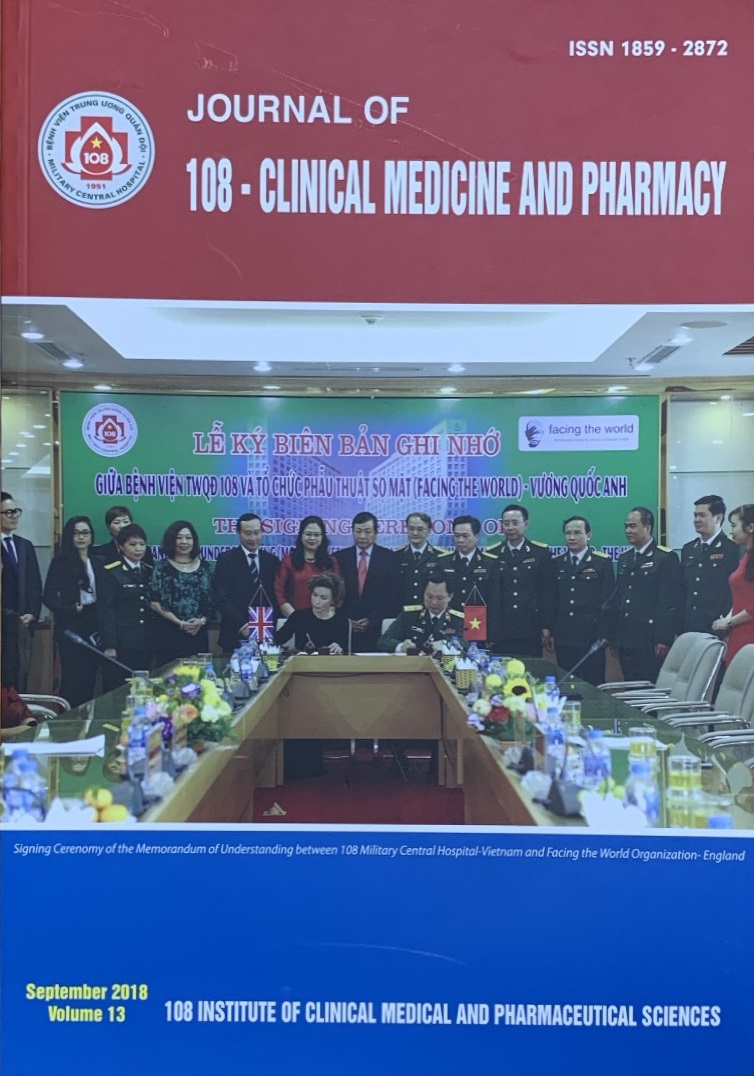The influence factors on good outcome and mortality within 3 months after mechanical thrombectomy in patients with acute large vessel occlusion stroke
Main Article Content
Keywords
Tóm tắt
Objective: The influence factors associated with mechanical thrombectomy for patients with acute large vessel occlusion stroke remain to be elucidated. This study aimed to investigate clinical and procedural factors influence on good outcome and mortality after mechanical thrombectomy in a cohort of patients stroke. Subject and method: We analyzed clinical; procedural data and results of 123 patients with acute large vessel occlusion stroke, who had treated mechanical thrombectomy. A good outcome was defined as a modified Rankin Scale (mRS) of 0 to 2 at 3 months. The associations between clinical, imaging, procedural factors and good outcome, mortality, respectively, were evaluated using logistic regression analysis. Result: Using logistic regression analysis, a deviation of the eyes and head (odds ratio {OR}, 1.17; 95% confidence interval {CI}, 1.01 - 1.34, p=0.03); baseline NIHSS score (OR, 1.17; 95% CI: 1.01 - 1.34; p=0.03) and CTA-based collateral flow assessment (OR, 3.35; 95%CI: 0.12 - 0.72; p=0.007) were independent predictors of good outcome. Seizures, Glasgow score < 8, baseline NIHSS score > 15 and ASPECTS < 7 had associated mortality with p<0.01. Revascularization time, reperfusion of cerebral artery (TICI > 2b, 3), ventilation, tracheostomy, craniotomy, reocclusion, symptomatic intracerebral hemorrhage (sICH) after thrombectomy and complication in treated duration were associated with good outcome and mortality. Conclusion: The deviation of the eyes and head, baseline NIHSS score and CTA-based collateral flow were independent predictors of good outcome. Seizures, Glasgow < 8, NIHSS > 15 and ASPECTS < 7 had associated mortality. Revascularization time, reperfusion with TICI > 2a, ventilation, tracheostomy, craniotomy, reocclusion, sICH after thrombectomy and complication were associated with both good outcome and mortality.
Keywords: Acute ischemic stroke, mechanical thrombectomy, prognosis, mortality, outcome.
Article Details
Các tài liệu tham khảo
2. Adams HP, Jr, PH Davis, EC Leira et al (1999) Baseline NIH Stroke Scale score strongly pre-dicts outcome after stroke: A report of the Trial of Org 10172 in Acute Stroke Treatment (TOAST). Neurology 53(1): 126-131.
3. Alawieh A, AK Pierce, J Vargas et al (2018) The golden 35 min of stroke intervention with ADAPT: Effect of thrombectomy procedural time in acute ischemic stroke on outcome. J Neurointerv Surg 10(3): 213-220.
4. Behme D, A Kowoll, A Mpotsaris et al (2016) Multicenter clinical experience in over 125 pa-tients with the Penumbra Separator 3D for mechanical thrombectomy in acute ischemic stroke. J Neurointerv Surg 8(1): 8-12.
5. Gropen T, A Boehme, S Martin-Schild et al (2016) Comparison of Large Vessel Occlusion Prediction Scores (I6.002). Neurology 86(16).
6. Jansen IG, OA Berkhemer, AJ Yoo et al (2016) Comparison of CTA- and DSA-based collateral flow assessment in patients with anterior circu-lation stroke. AJNR Am J Neuroradiol.
7. Menon BK, E Qazi, V Nambiar et al (2015) Dif-ferential effect of baseline computed Tomo-graphic angiography collaterals on clinical out-come in patients enrolled in the Interventional Management of Stroke III Trial. Stroke 46(5): 1239-1244.
8. Powers WJ, AA Rabinstein, T Ackerson et al (2018) 2018 Guidelines for the Early Man-agement of Patients With Acute Ischemic Stroke: A Guideline for Healthcare Profession-als From the American Heart Associa-tion/American Stroke Association. Stroke 49(3): 46-110.
9. Yoon W, SK Kim, MS Park et al (2017) Predic-tive factors for good outcome and mortality af-ter stent-retriever thrombectomy in patients with acute anterior circulation stroke. J Stroke 19(1): 97-103.
 ISSN: 1859 - 2872
ISSN: 1859 - 2872
